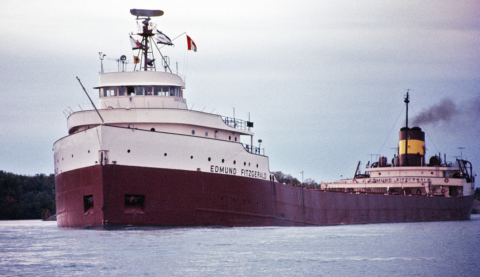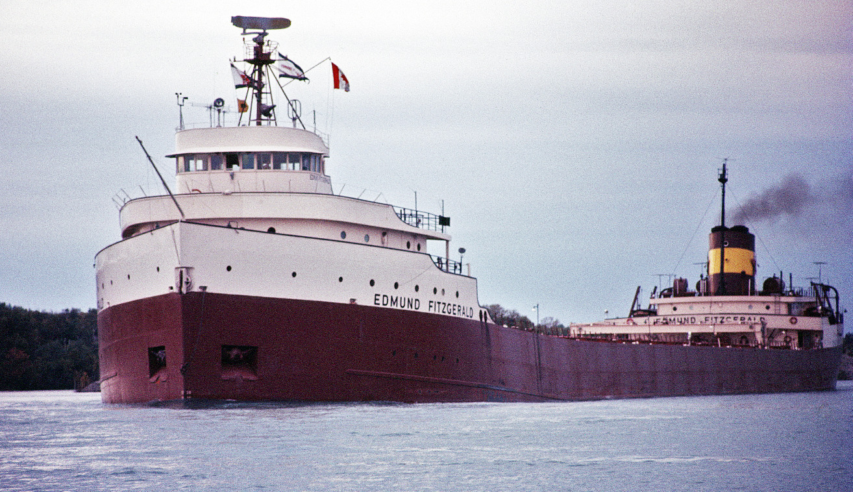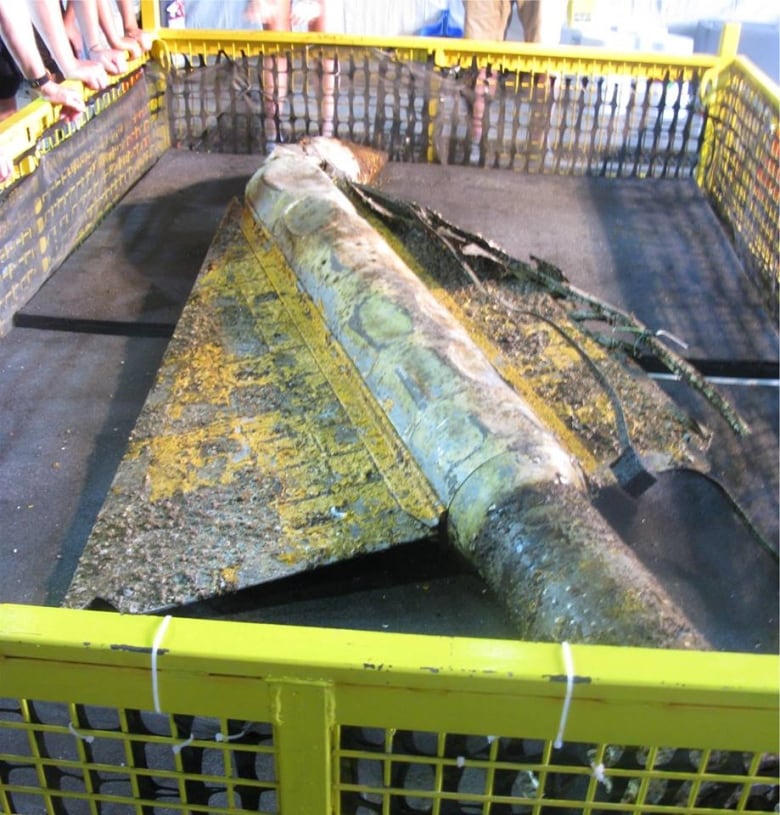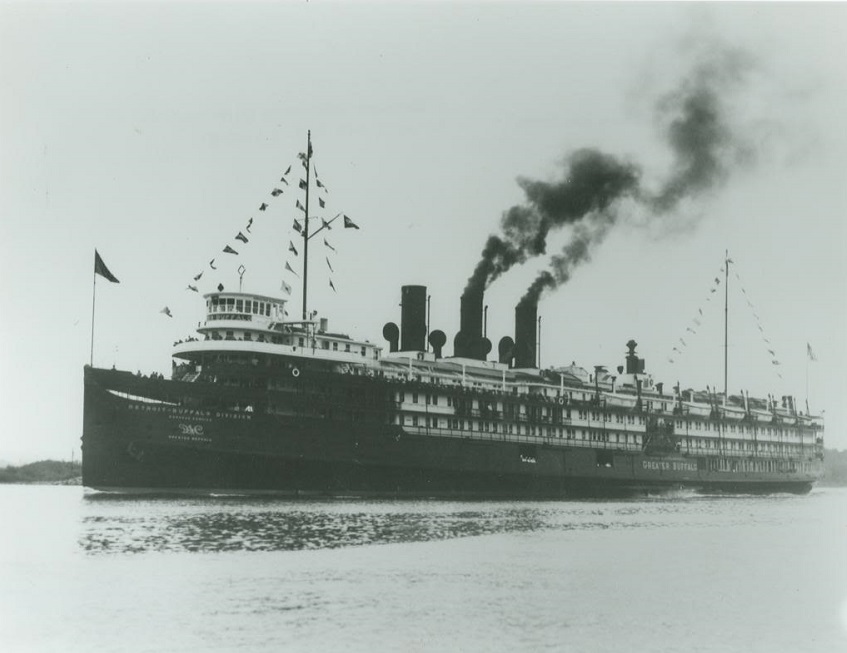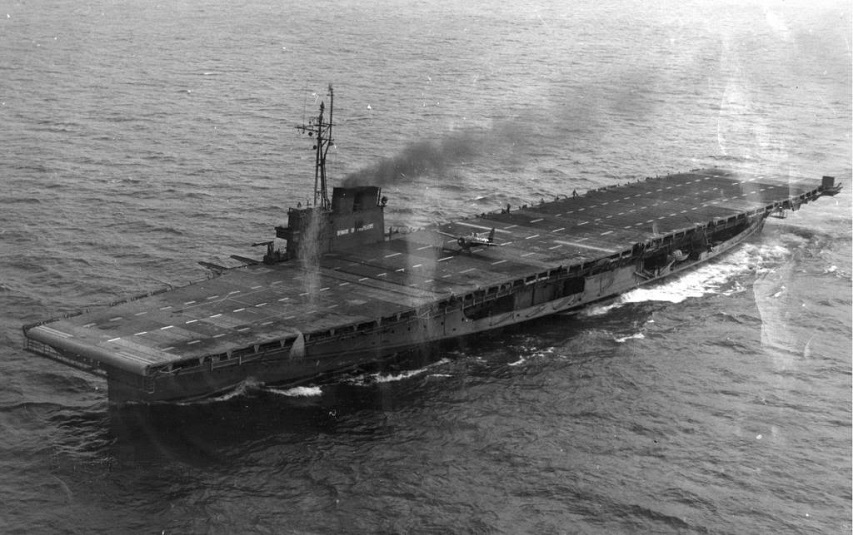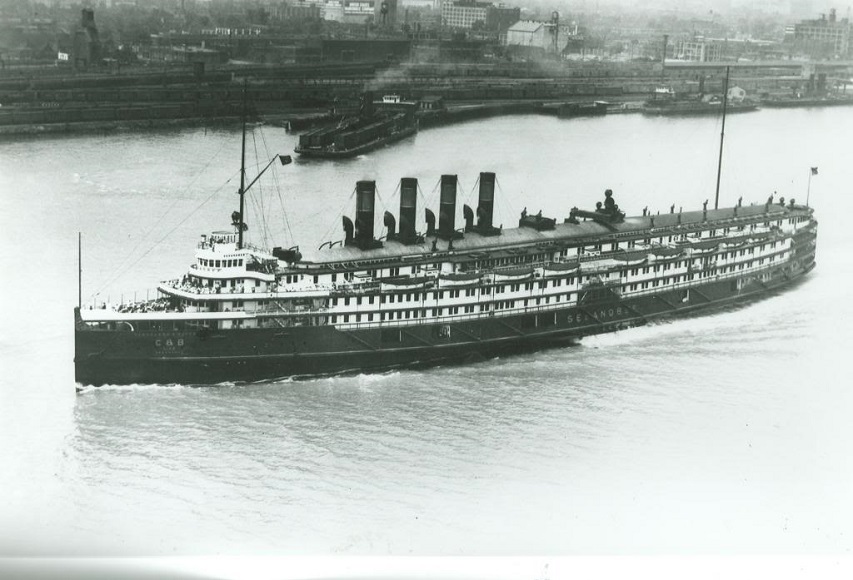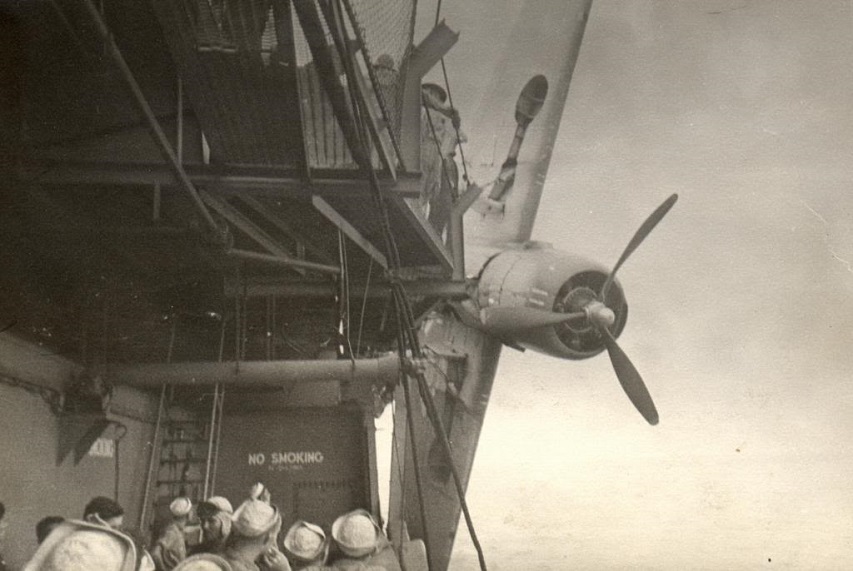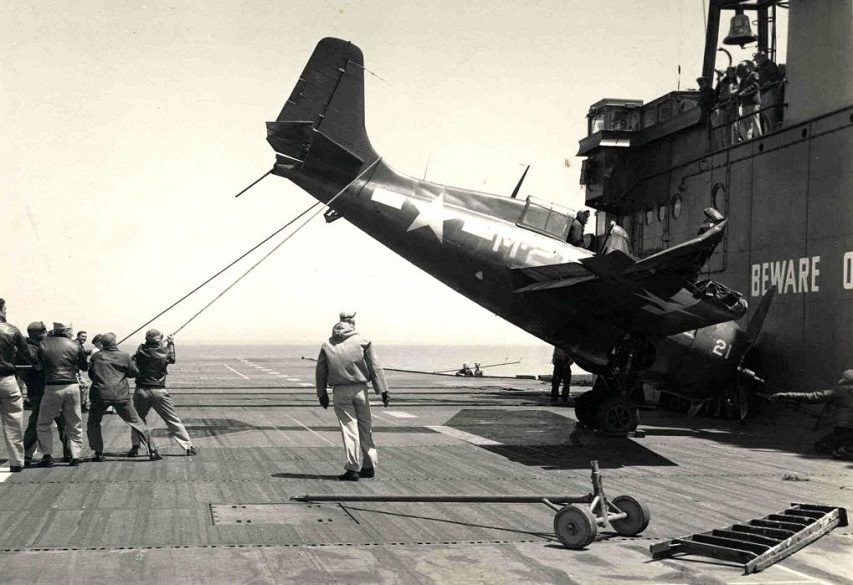SD457500
Published Jan 15, 2024The Twin Ports is home to a bustling array of shipping, and industry by both rail and water. The massive iron ore docks see huge ships coming and going, while being loaded with taconite. This video has unique, and rare views seldom seen!
In this video, we’ll see how the MASSIVE Mesabi Miner gets loaded, how the taconite gets unloaded, and an aerial view of the large Canadian National Dock 6 in Duluth. This is a neat operation, complete with the unloading of taconite cars — something rarely seen!
(more…)
July 12, 2024
Loading An Ore Ship – The Massive Mesabi Miner
May 21, 2024
QotD: First Nations warfare in eastern North America
For this week’s book recommendation, I am going with a recent release, Wayne E. Lee, The Cutting-Off Way: Indigenous Warfare in Eastern North America, 1500-1800 (2023). This is one of those books I have been waiting to come out for quite some time, as I studied under the author at UNC Chapel Hill and so had heard parts of this argument laid out for years; it is a delight to see the whole thing altogether now in one place.
Fundamentally, Lee aims in the book to lay out a complete model for Native American warfare in eastern North America (so the East Coast, but also the Great Lakes region and the Appalachian Mountains), covering both the pre-European-contact system of warfare and also how that system changes as a result of contact. In presenting this model of a “cutting-off” way of war, Lee is explicitly looking to supplant the older scholarly model, called the “skulking way of war”, which he argues has been fatally overtaken by developments in history, archaeology and anthropology. As a description of a whole system of war, Lee discusses tactics, the movement of war parties, logistics and also the strategic aims of this kind of warfare. The book also details change within that model, with chapters covering the mechanisms by which European contact seems to have escalated the violence in an already violent system, the impact of European technologies and finally the way that European powers – particularly the English/British – created, maintained and used relationships with Native American nations (as compared, quite interestingly, to similar strategies of use and control in contemporary English/British occupied Ireland).
The overall model of the “cutting-off” way of war (named because it aimed to “cut off” individual enemy settlements, individuals or raiding parties by surprise or ambush; the phrase was used by contemporary English-language sources describing this form of warfare) is, I think, extremely useful. It is, among other things, one of the main mental models I had in mind when thinking about what I call the “First System” of war.1 Crucially it is not “unconventional” warfare: it has its own well-defined conventions which shape, promote or restrict the escalation of violence in the system. At its core, the “cutting-off” way is a system focused on using surprise, raids and ambushes to inflict damage on an enemy, often with the strategic goal of forcing that enemy group to move further away and thus vindicating a nation’s claim to disputed territory (generally hunting grounds) and their resources, though of course as with any warfare among humans, these basic descriptions become immensely more complicated in practice. Ambushes get spotted and become battles, while enmities that may have begun as territorial disputes (and continue to include those disputes) are also motivated by cycles of revenge strikes, internal politics, diplomatic decisions and so on.
The book itself is remarkably accessible and should pose few problems for the non-specialist reader. Lee establishes a helpful pattern of describing a given activity or interaction (say, raids or the logistics system to support them) by leading with a narrative of a single event (often woven from multiple sources), then following that with a description of the system that event exemplifies, which is turn buttressed with more historical examples. The advantage of those leading spots of narrative is that they serve to ground the more theoretical system in the concrete realia of the historical warfare itself, keeping the whole analysis firmly on the ground. At the same time, Lee has made a conscious decision to employ a fair bit of “modernizing” language: strategy, operations, tactics, logistics, ways, ends, means and so on, in order to de-exoticize Native American warfare. In this case, I think the approach is valuable in letting the reader see through differences in language and idiom to the hard calculations being made and perhaps most importantly to see the very human mix of rationalism and emotion motivating those calculations.
The book also comes with a number of maps, all of which are well-designed to be very readable on the page and a few diagrams. Some of these are just remarkably well chosen: an initial diagram of a pair of model Native American polities, with settlements occupying core zones with hunting-ground peripheries and a territorial dispute between them is in turn followed by maps of the distribution of actual Native American settlements, making the connection between the model and the actual pattern of settlement clear. Good use is also made of period-drawings and maps of fortified Native American settlements, in one case paired with the modern excavation plan. For a kind of warfare that is still more often the subject of popular myth-making than history, this book is extremely valuable and I hope it will find a wide readership.
Bret Devereaux, “Fireside Friday, September 29, 2023 (On Academic Hiring)”, A Collection of Unmitigated Pedantry, 2023-09-29.
1. Itself an ultra-broad category with many exceptions and caveats.
November 24, 2023
Freshwater Flattops; The Corn Belt Carriers Wolverine and Sable
[NR: These fascinating lake vessels first came to my attention back in 2013 – Lake Michigan’s carrier fleet.]
Ed Nash’s Military Matters
Published 8 Aug 2023Sources for this video can be found at the relevant article on:
https://militarymatters.online/
(more…)
August 11, 2023
The Weirdest Boats on the Great Lakes
Railroad Street
Published 5 May 2023Whalebacks were a type of ship indigenous to the Great Lakes during the late 1890s and mid 1900s. They were invented by Captain Alexander McDougall, and revolutionized the way boats on the Great Lakes handled bulk commodities. Unfortunately, their unique design was one of the many factors which led to their discontinuation.
(more…)
May 8, 2023
Gordon Lightfoot, RIP
Mark Steyn on perhaps the best-known song of the late Gordon Lightfoot:
In November 1975 Lightfoot chanced to be reading Newsweek‘s account of the sinking of a Great Lakes freighter in Canadian waters. He’s a slow and painstaking author, which is one reason he’s given up songwriting – because it takes too much time away from his grandkids. But that day forty-three years ago the story literally struck a chord, and he found himself scribbling away, very quickly:
The legend lives on From the Chippewa on down
Of the big lake they called Gitche Gumee
The lake, it is said Never gives up her dead
When the skies of November turn gloomy …“Gitche gumee” is Ojibwe for “great sea” – ie, Lake Superior – as you’ll know if you’ve read your Longfellow, which I’m not sure anyone does these days. Evidently Hiawatha was on the curriculum back east across Lake Huron in young Gordy’s Orillia schoolhouse. The Gitche Gumee reference may be why, when I first heard “The Wreck of the Edmund Fitzgerald”, I assumed its subject had sunk long before the song was written. In fact, it sank on November 10th 1975 — just a few days before Lightfoot wrote the number. When she’d launched in 1958, the Edmund Fitzgerald was the largest ship on the Great Lakes, and, when she passed through the Soo Locks between Lakes Superior and Huron, her size always drew a crowd and her captain was always happy to entertain them with a running commentary over the loudspeakers about her history and many voyages. For seventeen years she ferried taconite ore from Minnesota to the iron works of Detroit, Toledo and the other Great Lakes ports … until one November evening of severe winds and 35-feet waves […]
That said, human tragedy alone does not make for singable material. The last contact from the SS Edmund Fitzgerald was with another ship, the SS Arthur M Anderson. Yet “The Wreck of the Arthur M Anderson” would have been a far less evocative title. Arthur Marvin Anderson was on the board of US Steel, as Edmund Fitzgerald was on the board of Northwestern Mutual. But there is something pleasingly archaic about the latter name: in fact, as I think of it, I believe the last Edmund I met was one of Gordon Lightfoot’s fellow Canadian singers — the late operetta baritone Edmund Hockridge. Pair “Edmund” to “Fitzgerald”, and you have something redolent of Sir Walter Scott or Robert Louis Stevenson, of shipwrecks off Cornwall or the Hebrides. Perhaps that’s why “The Wreck of the Edmund Fitzgerald” either sounds like an old Scots-Irish folk tune or, alternatively, actually is one. For any IRA members reading this, Bobby Sands, the hunger striker who starved himself to death in a British gaol, wrote in his cell a song called “Back Home in Derry”, about Irish prison deportees en route to Australia and set to a tune remarkably like “The Wreck of the Edmund Fitzgerald”, which it seems unlikely he ever heard.
I see some musicologists claim the tune is in Dorian mode, although it sounds Mixolydian to me (like “The Wexford Carol”). Whichever it is, there is a perfect union between the emphatic melody, the crash of the waves, the antediluvian moniker of Northwestern Mutual’s chairman, and even the obvious filler phrases, so typical of ancient folk songs:
The lake, it is said
Never gives up her dead— which returns far more effectively in the final verse:
Superior, they said
Never gives up her dead— as if Gitchee Gumee is some vast ravening beast. Go back to Orillia, to Fourth Grade in 1947, and the parents listening to Mr and Mrs Lightfoot’s little boy sing “Too-Ra-Loo-Ra-Loo-Ral” as if a bit of synthetic shamrock from an old Tin Pan Alleyman were a genuine Irish lullaby from the mists of Emerald Isle antiquity. That’s the genius of “The Wreck of the Edmund Fitzgerald”: It was born sounding as if it’s a hundred years old. And its agelessness is all the more amazing when you consider that it’s essentially an act of journalism, an adaptation of a news report about something that happened a few days earlier – just the facts, ma’am, with minimal artistic license:
In a musty old hall
In Detroit they prayed
In the maritime sailors’ cathedral …“Maritime sailors” is surely a redundancy, and it’s not a cathedral but the “Mariners’ Church”, which doesn’t quite go the distance syllable-wise. And a parishioner wrote to Lightfoot to say the church isn’t in the least bit “musty”, so these days he finds alternative adjectives.
But that’s all details. The power of the song lies in its storytelling. It immortalized the fate of the freighter not just for the families of the dead, “the wives and the sons and the daughters”, but for everyone, and it made the Edmund Fitzgerald the Titanic of the Great Lakes – except that the Titanic never inspired any song like this. The mournful toll of the lakes in the penultimate stanza is Gordon Lightfoot at his very best:
Lake Huron rolls Superior sings
In the rooms of her ice-water mansion
Old Michigan steams Like a young man’s dreams
The islands and bays are for sportsmen
And farther below Lake Ontario
Takes in what Lake Erie can send her
And the iron boats go As the mariners all know
With the gales of November remembered …The gales of November howl and the waves rise up and devour the ship. And then the gales subside and the placid surface betrays no trace of twenty-nine men, taken deep into the rooms of an ice-water mansion and never to be found.
February 24, 2023
War of 1812 – Freshwater Edition
Drachinifel
Published 4 Sept 2019Today we take a look at the War of 1812 as it progressed on the Great Lakes.
(more…)
March 22, 2022
The LAST Tribal-Class Destroyer — HMCS Haida
Royal Canadian Navy / Marine Royale Canadienne
Published 21 Mar 2022HMCS Haida has a long and distinguished naval career of service during the Second World War, the Korean Conflict and the Cold War, that’s why Canada’s “fightingest ship” is today a National Historic Site and the ceremonial flagship of the Royal Canadian Navy.
BUT … have you heard the rest of the story?
The incredible journey of saving Haida after being decommissioned in 1963 is told as you’ve never heard it before directly from the last survivor of HAIDA Inc., the group responsible for rescuing the aging Tribal-class destroyer from the scrap heap.
November 30, 2021
Dynamite Luke Dillon and the Welland Canal
The History Guy: History Deserves to Be Remembered
Published 29 Nov 2021Around 7 in the evening on April 21, 1900 two large explosions rocked the hamlet of Thorold, Ontario. It was an act of terrorism, an attempt to breach the locks of the Welland canal — a ship canal connecting Lake Ontario to Lake Erie, allowing ships to bypass Niagara Falls. Three men were arrested, but who were these “dynamitards”? It would be two years before the identity of their notorious leader would be revealed.
This is original content based on research by The History Guy. Images in the Public Domain are carefully selected and provide illustration. As very few images of the actual event are available in the Public Domain, images of similar objects and events are used for illustration.
You can purchase the bow tie worn in this episode at The Tie Bar:
https://www.thetiebar.com/?utm_campai…All events are portrayed in historical context and for educational purposes. No images or content are primarily intended to shock and disgust. Those who do not learn from history are doomed to repeat it. Non censuram.
Find The History Guy at:
Patreon: https://www.patreon.com/TheHistoryGuy
Please send suggestions for future episodes: Suggestions@TheHistoryGuy.netThe History Guy: History Deserves to Be Remembered is the place to find short snippets of forgotten history from five to fifteen minutes long. If you like history too, this is the channel for you.
Awesome The History Guy merchandise is available at:
https://teespring.com/stores/the-hist…Script by THG
#history #thehistoryguy #Canada
December 17, 2020
Fallen Flag — the Ann Arbor Railroad
This month’s Classic Trains featured fallen flag is the Michigan-based Ann Arbor Railroad which operated rail services from Toledo, Ohio to Elberta and Frankfort, Michigan, along with lake ferry service across Lake Michigan to Manitowoc and Kewaunee, Wisconsin and Menominee and Manistique in Michigan’s Upper Peninsula. Robert I. Warrick provides an outline of the history of the line:
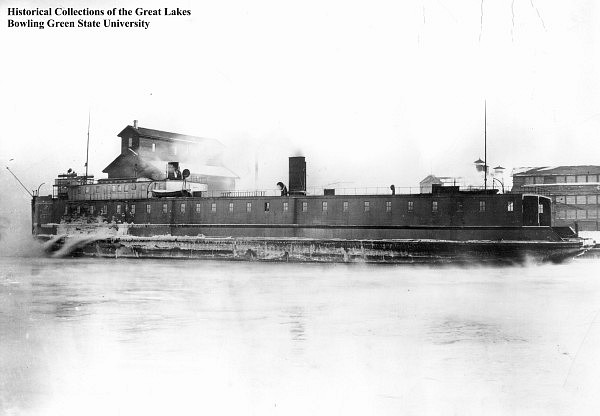
Ann Arbor No. 1, built in 1892 by Craig Shipbuilding Co. in Toledo, Ohio. She was destroyed in a fire on March 7, 1910 at Manitowoc, Wisconsin.
Photo from Bowling Green State University via Wikimedia Commons.
The Ann Arbor Railroad was as much a steamship line as a railroad. Built from Toledo, Ohio, northwest to Frankfort, Mich., it existed for one reason — to move freight in car ferries across Lake Michigan to bypass Chicago. From 1910 to 1968, “the Annie” operated 320 car ferry route-miles versus 292 miles of railroad. AA was at the forefront of car ferry design and innovation, from the first wooden-hulled vessels to the most advanced car ferry to ever sail Lake Michigan.
During the 1940s, up to six ferries made the round trip from Boat Landing, as AA called its yard in Elberta on the south side of Frankfort harbor, to two Wisconsin and two Michigan Upper Peninsula ports. The boats ran year-round on a tight schedule, timed to match with three pairs of scheduled Toledo freights, where AA interchanged with five trunk lines. Well-kept 2-8-2s powered those short, fast trains across AA’s rolling profile until 1950, when Alco FA2s took over.
[…]
The Eastern mergers of the 1960s ultimately doomed the old Ann Arbor. As planning for Penn Central went on, the Norfolk & Western merged with Wabash, Nickel Plate, and two smaller roads in 1964. N&W wanted no part of the Ann Arbor and its costly ferries, so AA was foisted off on DT&I, which was profitable by the 1960s.
With ICC approval, DT&I took over the Ann Arbor on August 31, 1963, and soon replaced the tired FA2s with 10 GP35s, riding on Alco trucks and painted in DT&I orange with large “Ann Arbor” lettering. DT&I’s GPs often mixed with the Annie’s.
DT&I had ferry Wabash refitted, changed her name to City of Green Bay, and loaned AA $2.5 million to rebuild Ann Arbor No. 7. The railroad renamed No. 7 Viking, lengthened it, installed four EMD 2,500 h.p. 567 diesels. But even with the bigger boats, capacity remained an issue as car sizes increased. AA was losing money. First the ferry route to Manistique, Mich. (and AA subsidiary Manistique & Lake Superior), was discontinued, then the one to Menominee, Mich.
Ann Arbor’s fate was sealed. A firm was hired to liquidate Pennsylvania Company assets, including AA and DT&I. Ann Arbor defaulted on the loan for the Viking on November 1, 1972, and filed for bankruptcy on October 15, 1973, leading to AA’s inclusion with other bankrupts in the Regional Rail Reorganization Act of 1973 that resulted in Conrail.
November 20, 2018
Gordon Lightfoot’s “Wreck of the Edmund Fitzgerald“
Mark Steyn devotes a column to the work of Canadian singer/songwriter Gordon Lightfoot, particularly his very well-known ballad on the loss of the Edmund Fitzgerald on Lake Superior in 1975:
When it comes to trains and boats and planes, Gordon Lightfoot has hymned all three, but it’s the middle mode of transportation that produced the song he’s proudest of:
The ship was the pride Of the American side
Coming back from some mill in Wisconsin
As the big freighters go
It was bigger than most
With a crew and good captain well seasoned…In November 1975 Lightfoot chanced to be reading Newsweek‘s account of the sinking of a Great Lakes freighter in Canadian waters. He’s a slow and painstaking writer, which is one reason he’s given up songwriting – because it takes too much time away from his grandkids. But that day forty-three years ago the story literally struck a chord, and he found himself scribbling away, very quickly:
The legend lives on From the Chippewa on down
Of the big lake they called Gitche Gumee
The lake, it is said Never gives up her dead
When the skies of November turn gloomy…“Gitche gumee” is Ojibwe for “great sea” – ie, Lake Superior – as you’ll know if you’ve read your Longfellow, which I’m not sure anyone does these days. Evidently Hiawatha was on the curriculum back east across Lake Huron in young Gordy’s Orillia schoolhouse. The Gitche Gumee reference may be why, when I first heard “The Wreck of the Edmund Fitzgerald“, I assumed its subject had sunk long before the song was written. In fact, it sank on November 10th 1975 – just a few days before Lightfoot wrote the number. When she’d launched in 1958, the Edmund Fitzgerald was the largest ship on the Great Lakes, and, when she passed through the Soo Locks between Lakes Superior and Huron, her size always drew a crowd and her captain was always happy to entertain them with a running commentary over the loudspeakers about her history and many voyages. For seventeen years she ferried taconite ore from Minnesota to the iron works of Detroit, Toledo and the other Great Lakes ports …until one November evening of severe winds and 35-feet waves:
The wind in the wires
Made a tattle-tale sound
And a wave broke over the railin’
And every man knew
As the captain did too
‘Twas the witch of November come stealin’…And about seventeen miles from Whitefish Bay the Edmund Fitzgerald sank, with the loss of all 29 lives. It remains the largest ship ever wrecked on the Great Lakes, launched in 1958 to take advantage of the new St Lawrence Seaway (to be opened by the Queen and President Eisenhower on an inaugural voyage by the Royal Yacht Britannia the following year) and specifically constructed to be only a foot less than the maximum length permitted. Edmund Fitzgerald was the then chairman of Northwestern Mutual Life Insurance of Milwaukee, and, as far as I’m aware, the only insurance company executive to be immortalized in a song title. Fifteen thousand people showed up for the ship’s launch at River Rouge, Michigan. It took Mrs Fitzgerald three attempts to shatter the champers against the bow, and then there was a further half-hour’s delay as the shipyard workers tried to loosen the keel blocks. After which the ship flopped into the water, crashed against a pier, and sent up a huge wave to douse the crowd. One spectator promptly had a heart attack and died.
And then came seventeen happy years. Even in the twenty-first century, there is something especially awful and sobering about death at sea: it is in a certain sense a reminder of the fragility of security and modernity. Whenever I’m in, for example, St Pierre et Miquelon, the last remaining territory of French North America, I stop by the monument aux marins disparus, sculpted in 1964 and to which many names have been added in the years since – because a ship put out, and somewhere on the horizon the great primal forces rose up from the depths and snapped it in two like a matchstick.
August 23, 2018
Lost model of the Avro Arrow found off Prince Edward County
Call me a cynic, but this is likely to kick off yet another round of myth-making about the Avro Arrow:
An iconic piece of Canada’s aviation history has been pulled out of the depths of Lake Ontario and the recovery team is hoping to find more beneath the waves.
Divers brought what is believed to be a model of the Avro Arrow to the surface last week off Prince Edward County and brought it to the Canada Aviation and Space Museum on Tuesday.
Since last September, a series of models have been found at the bottom of Lake Ontario.
The model is about three metres long — a 1/8 scale of the actual plane, according to Erin Gregory, assistant curator at the museum.
“It looks like a rocket with large triangular wings,” she said.
1/8 scale model of the Avro Arrow recovered from Lake Ontario off the shores of Prince Edward County
Photo by OEX Recovery Group, via CBC.The Canadian Conservation Institute and the aviation museum, will oversee the conservation and restoration of the test models.
What they found last week, is not the full replica of the Arrow, the search group was hoping to find. Instead they believe it is a smaller model, meant to test the delta wing design — the triangular shape the plane was known for.
“The delta wing was a relatively new concept at that point, so it required a lot of testing to determine whether or not it would perform well, particularly at supersonic speeds,” said Gregory.
The Avro Arrow holds a special place in the hearts of Canadian conspiracy theorists – it’s “artisanal Canadian myth-making, hand-woven, fair-trade, and 100% organic”. As I said back in 2004, this is the only truly Canadian conspiracy theory (Colby Cosh calls it our “Napoleon-hat” complex).
February 16, 2014
Winter ice approaching modern record on the Great Lakes
In USA Today, Eric Lawrence talks about the ongoing cold weather’s impact on the Great Lakes:
“In the last one to two weeks, we’ve seen rapid accumulations on Lakes Superior, Huron and Michigan,” said Jeff Andresen, an associate professor in Michigan State University’s geography department who also is the state climatologist.
The ice cover on the lakes increased from 79.7% to 88.4% just in the past week, putting the region close to the record of almost 95% set in February 1979, according to data compiled by the National Oceanic and Atmospheric Administration’s Great Lakes Environmental Research Laboratory in Ann Arbor.
The extensive ice cover has had some interesting and positive effects, like shutting off lake-effect snow, making it sunnier in portions of states near the lakes and limiting evaporation, which could help boost lake levels.
And the ice cover could help delay the spring warm-up — good news for farmers as it helps keep certain crops, like fruit trees, dormant longer and less susceptible to freezing early in the growing season — Andresen said.
Conversely, it’s bad news for the shipping industry, whose vessels can’t go anywhere when the ports are frozen solid.
The winter of 2013-14 also is shaping up to be one of the five coldest, at least in Michigan’s recorded history, Andresen said, although it’s still early to say for certain.
“We haven’t seen many winters like this that are cold from beginning to end,” he said, noting that this is the fourth consecutive month that is colder than normal. “It has been an extraordinary winter, and the ice cover is a manifestation of that unusually cold winter.”
He cautioned that temperatures forecast in the 40s next week could hurt the chances to break an ice-cover record.
November 5, 2013
Lake Michigan’s carrier fleet
I’d never heard of the US Navy’s carrier training ships that operated on Lake Michigan from 1942-45, so this link to a thread at Warbird Information Exchange from Roger Henry was of great interest:
This thread may give you a nice idea of what that exercise was all about. Many interesting images to study here and quite possibly of interest to those who are involved with the restoration of aircraft that have been recovered from the Lakes. I have also included a page from my dad’s logbook showing his 1st thru 8th carrier landings on the USS Wolverine in July 1944. Sources are the NMNA archives, Library of Congress photo archives, LIFE image archives.
This will be a large photo thread in a few parts so we’ll start with the two principal ships.
WIKI: USS Sable (IX-81) was a training ship of the United States Navy during World War II. Originally built as the Greater Buffalo, a sidewheel excursion steamer, she was converted in 1942 to a freshwater aircraft carrier to be used on the Great Lakes. She was used for advanced training for naval aviators in carrier takeoffs and landings. One aviator that trained upon the Sable was future president George H. W. Bush. Following World War II, Sable was decommissioned on 7 November 1945. She was sold for scrapping on 7 July 1948 to the H.H. Buncher Company.
I was initially surprised that both training carriers were converted side-paddle steamers … I’d have thought the extra costs in converting to propeller drive would make them less-than ideal conversion subjects — you can clearly see in the second image that they left the side-paddles in place, so the main cost of conversion was the construction of the flight deck and repositioning the smokestacks to the starboard side (no hangar deck, elevators, or catapults in evidence):
WIKI: USS Wolverine (IX-64) a side-wheel excursion steamer built in 1913—was originally named Seeandbee, a name based upon her owners’ company name, the Cleveland and Buffalo Transit Co.[4] She was constructed by the American Ship Building Company of Wyandotte, Michigan. The Navy acquired the sidewheeler on 12 March 1942 and designated her an unclassified miscellaneous auxiliary, IX-64. She was purchased by the Navy in March 1942 and conversion to a training aircraft carrier began on 6 May 1942.[5] The name Wolverine was approved on 2 August 1942 with the ship being commissioned on 12 August 1942.[5][6] Intended to operate on Lake Michigan, IX-64 received its name because the state of Michigan is known as the Wolverine State.
And given that almost all the pilots were still learning their trade — these were training ships, after all — there were more than a few mishaps:
January 3, 2013
The Avro Arrow model hunt
Updating an old story (original posting at the old blog from 2004) on the search for the scale models used to develop the Avro Arrow:
Andrew Hibbert knows they’re down there somewhere. At the bottom of Lake Ontario, with more than 50 years’ worth of zebra mussels clinging to their hulls, sit nine models of the Avro Arrow.
The models were part of a program to test the hull design of the legendary Canadian plane, cancelled before it could truly soar. Strapped to high-powered booster rockets, the 10-foot models weighed nearly 500 pounds and flew over Lake Ontario at supersonic speeds. Their onboard sensors — revolutionary for the 1950s — relayed information back to the launch site at Point Petre, in Prince Edward County.
The models represent a key part of the development of the scrapped plane project.
The Avro Arrow made its first flight in 1958. The interceptor was widely regarded as ahead of its time in terms of aerospace technology. Its Malton plant employed nearly 15,000 people.
But development was cancelled abruptly in 1959, after five Arrows had flown. All were ordered destroyed, along with any documentation and related equipment.
The models, however, were safe from the scrubbing, protected by 30 metres of water.
Eleven models were tested in total: nine at Point Petre and two in Virginia. None has been recovered yet, but that hasn’t stopped so-called “Arrowheads” from hunting for them, often at great cost of both treasure and time.
The Arrow story has shown up a few times on the blog before.
Update: Colby Cosh is always good for summarizing:
I’m friendly with a local insane man who’s fixated on the Avro Arrow. There must be hundreds of these guys. It’s our Napoleon-hat.
— Colby Cosh (@colbycosh) January 3, 2013
I put it in a more wordy form in an earlier posting:
Even people who care less than nothing about aircraft or military technology seem to have opinions about the Avro Arrow (usually allowing them to take free shots at former Prime Minister John Diefenbaker for the decision to scrap the plane). It’s far enough in the past that the facts are more than obscured by the myths of the cottage conspiracy theory industry (artisanal Canadian myth-making, hand-woven, fair-trade, and 100% organic).
May 29, 2012
A review of the War of 1812 (non-Canadian-centric version)
The DiploMad appears to be blogging again, and for proof, here’s a neat little capsule of the War of 1812 without the Canadian aspect being treated as the most significant campaigning area of the war:
The war was brought about by British arrogance and American stupidity. The British were not reconciled to an independent United States, and could not take the place and its bombastic pronouncements about liberty seriously. They basically ignored the USA’s assertion of being a sovereign state, and proceeded to treat American ships and seaman as some sort of Brits gone rogue. The USA, for its part, could not understand that the British were in what they saw as a life-and-death struggle with Napoleon Bonaparte. We did not respect that. We reckoned we could trade and make deals with France, such as the spectacular Louisiana Purchase which filled Napoleon’s coffers and served his aim of helping create a huge potential rival to Britain, without raising British concerns or provoking them into action.
[. . .]
The British, despite the war in Europe managed to put together a more than credible military and naval force against the distant United States. The Americans, in turn, showed a talent that would serve us well in future wars by getting our act together at the last minute and putting on a damn good defense of the country. The US army, however, remained plainly horrendous throughout the war with its corrupt and politicized officer corps, and its half-baked, ill-planned and even worse executed invasion of Canada. The US also set the precedent of burning York — today’s Toronto — which led to the British burning of the nascent US capital which the army failed to defend. The army partially redeemed itself in the Battle of New Orleans, under the otherwise reprehensible Andrew Jackson (Note: Why is he on our $20 bill?)
The US navy, however, proved completely different, and did an amazing job of fighting off the much larger British navy, wreaking havoc on it, carrying the war into British waters, and even eliciting a warning from the Admiralty to the Royal Navy to avoid one-on-one combat with US ships. The US navy also fought a superb campaign on the Great Lakes which resulted in the British fleet withdrawing from those waters.
Minor quibble: the Royal Navy withdrew from Lake Erie, not from all the Great Lakes. Lake Ontario was still the scene of a major fleet-building contest with vessels of up to 130 guns under construction or entering service when the war ended.

